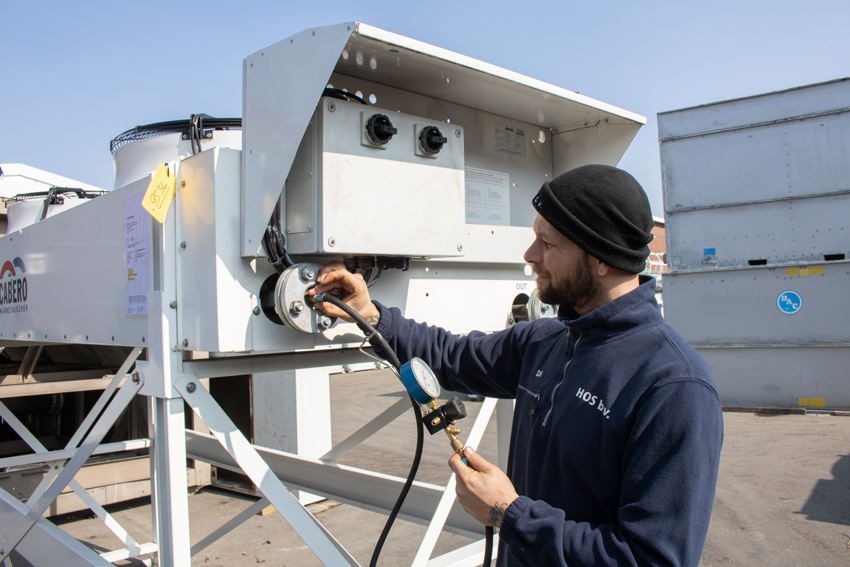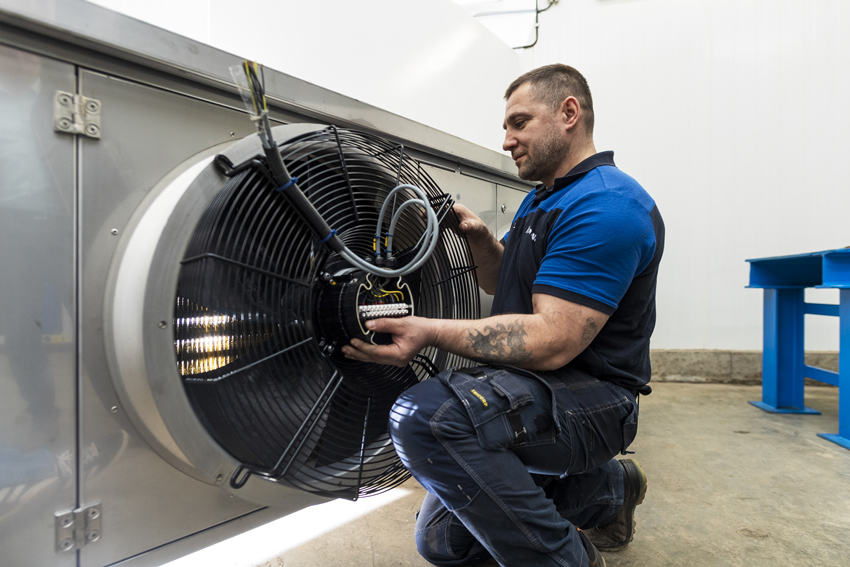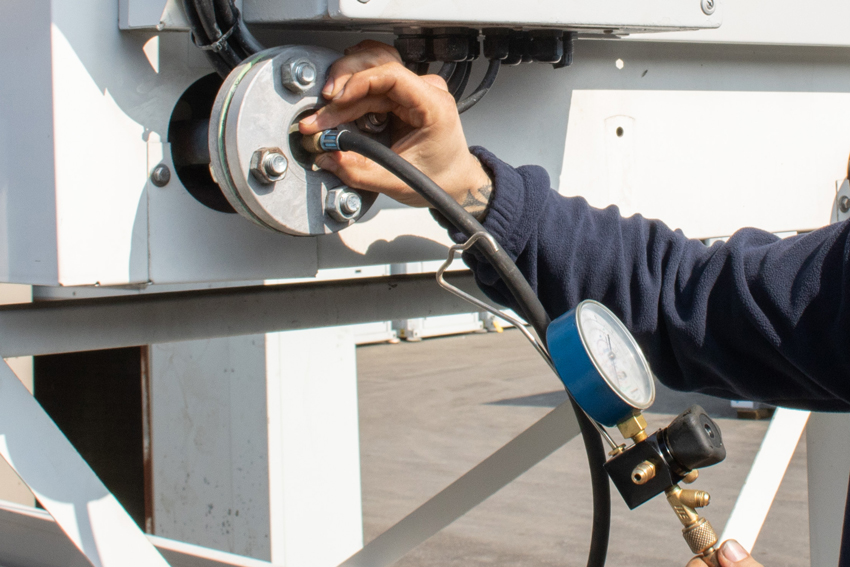Electrical testing
We perform a Megger test. The Megger device is used to test electrical resistance and insulation. Meggers use a high-voltage, low-current DC charge that measures the resistance within wires and motor windings to identify current leakage and faulty or damaged insulation. If present, the defrost elements also get a Megger test.
Apply voltage to fans and defrost elements
The next step is to energize the fans with the appropriate voltage. This step verifies the functionality of these components and ensures they operate as intended. We replace worn bearings on the fans if necessary to prevent future issues and maintain the unit's efficiency.
The final steps
When a machine passes all the quality checks, it gets sent to our washing station to get an industrial cleaning. If necessary or when requested by the client, we perform visual touch-ups on the unit to enhance its appearance. When the evaporator, condenser, or dry cooler looks how the client wants it to look, it is packaged for safe transport.


